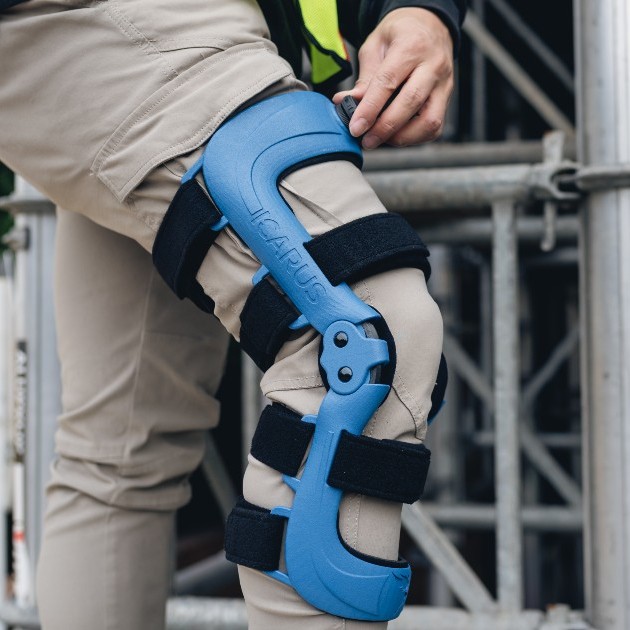Running is one of the most effective exercises for burning calories and improving cardiovascular health. It also helps to enhance your endurance and respiratory functions. However, one of the downsides is that it can also place strain on your hips, ankles, spine, and knees. That’s why if you’re a runner, you should always be looking for ways to prevent knee pain from occurring.
When you notice knee pain, the first thing to do is to listen to your body. Don’t run if you’re in pain, and don’t resume running if you haven’t adequately recovered. In this article, we explain how to get rid of knee pain from running, whether you’re an experienced runner or a beginner.
What is Runner's Knee?
Before we understand how to get rid of knee pain from running, it’s crucial to understand how it happens. Knee pain, also referred to as runner’s knee, can be caused by several factors, including swelling under the kneecap or strains and sprains. The pain could be centered around the knee, at the front, or behind the kneecap. Runner’s knee can also present itself as a dull pain or as sharp and severe.
If the pain is intense or you have a swollen knee, you should immediately see a medical professional. However, even if the pain isn’t too severe, you should still stop running while your knee heals. If the pain doesn’t go away after a week or so, you should see a doctor or physiotherapist for next steps.
Ways to Get Rid of Knee Pain from Running
Here are some proven methods that you can use to help get rid of runner’s knee:
Take Time to Rest
The first thing to do is rest. Even if you believe you can keep running, it’s better to rest and recover. If you must continue running, reducing the frequency and intensity will make it easier for your knees to heal.
Apply Ice
One of the most effective ways to alleviate pain and reduce inflammation in the knee is by applying ice on the affected area. Do this for around 20 minutes every two to three hours during the first two days.
Elevation and Compression
Wearing a compression bandage can promote healing by reducing swelling in the affected region. It’s also a good idea to keep the affected leg in an elevated position.
Strength Training
If the muscles around your hips and knees are weak, this could lead to knee pain. This is why adding strength training for glutes, hamstrings, quadriceps, and core muscles to your exercise regimen is important.
Proper Stretches
Regular stretches, particularly for your thighs, hips, and calves, will increase flexibility and decrease the overall strain on your knees. Doing 5-10 minutes of stretching before your runs is particularly effective at reducing instances of injury and pain.
Suitable Footwear
Seasoned runners know the importance of using the proper footwear during their routes. Get an analysis done to find the shoes that suit your running style. Remember that they should have enough support and cushioning.
Improve Your Running Form
A common cause of knee pain is incorrect running form. Check your running style to ensure you always land with your feet under your hips and your posture aligned. Take care not to over-stride in your running.
Warm Ups & Cool Downs
As mentioned, with the proper stretches, you can reduce your chances of injury. However warm ups before you begin your runs and less strenuous stretches to cool down after running is a great regimen to implement.
Increase Activity Gradually
It might be tempting to quickly increase the intensity or distance in your running. But any sudden increase can put pressure on your knees and body. Avoid this and opt for a gradual increase.
Engage in Other Exercise
Regular and rigorous running can take a toll on your knees. To prevent injuries, give your knees a break and try other activities, such as cycling or swimming, that support your cardio fitness while taking the load off of your joints.
Utilize Knee Braces
If you have searched online for ‘how to get rid of knee pain from running’, you have likely come across knee braces. A proper knee brace can increase your endurance, help reduce symptoms, offer stability, and improve your knee function, especially if you suffer from knee osteoarthritis.
If you have suffered from an injury or would like to prevent one from occurring, a knee brace can be an excellent solution. Ensure that you are purchasing from a reputable provider and that the brace has adequate support.
When to Seek Medical Assistance
You should consult a physical therapist or specialist if your pain worsens or persists. They can help find out the exact cause and create a customized treatment plan for you. In some cases, you might require surgery; however, this is usually a last resort.
How to Manage Your Knee Pain
With these suggestions, you should be better prepared and educated on how to get rid of knee pain from running. However, remember that if your pain aggravates, consulting a medical professional is a necessary next step.
If you are interested in finding a knee brace to help alleviate your symptoms or prevent any further injuries, consider the Ascender unloader knee brace from our team at Icaurs Medical. The Ascender can unload up to 40lbs of weight from your knees, helping you recover, perform, and excel.

